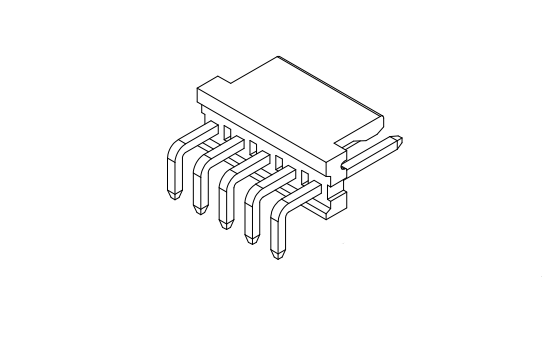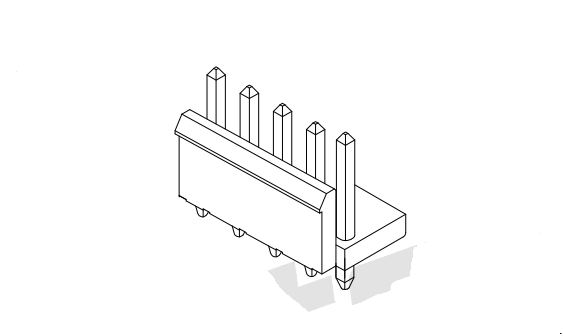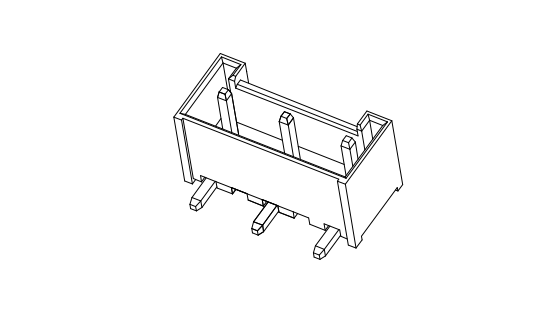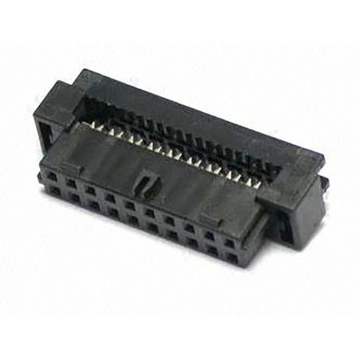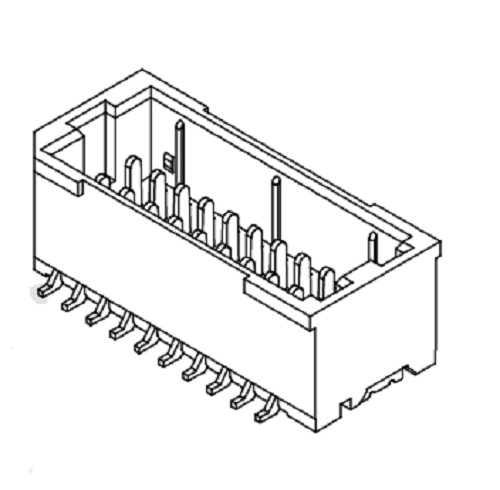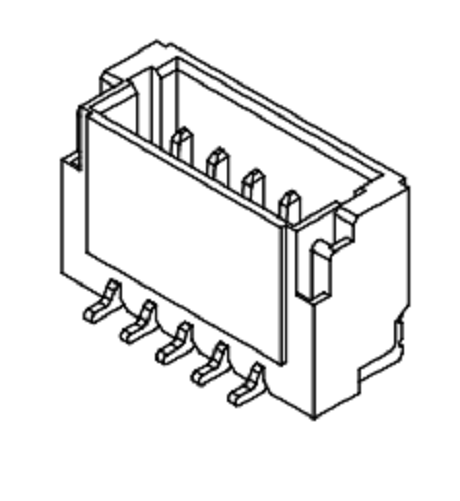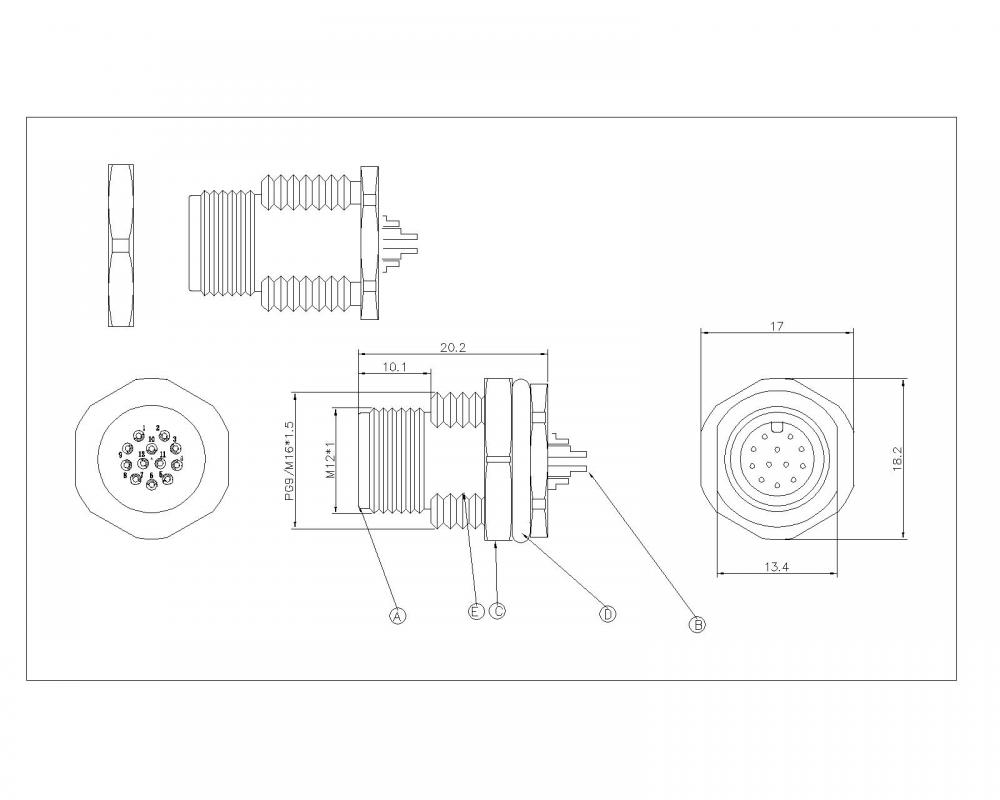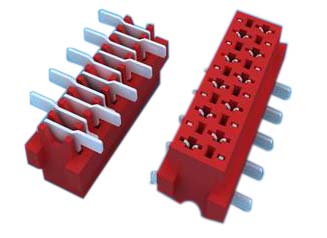Board-to-board connectors are designed to provide a durable and reliable connection between two circuit boards. The durability and reliability of these connectors depend on various factors, including the quality of the materials used, the design of the connector, and the manufacturing processes employed.
To ensure durability, board-to-board connectors are often constructed using high-quality materials that offer excellent mechanical strength and resistance to external forces, such as vibrations and shocks. Common materials used for connector bodies include thermoplastic resins, which provide good resistance to wear and tear, as well as metal alloys like brass or phosphor bronze, which offer high conductivity and corrosion resistance.
The reliability of board-to-board connectors is crucial in maintaining the integrity of the electrical connection. Connectors with well-designed contact systems ensure consistent and reliable electrical connections between the boards. These contact systems may include features such as multiple points of contact, gold-plated contacts for improved conductivity and corrosion resistance, and self-cleaning mechanisms that remove any debris or contaminants that may affect the connection.
Moreover, board-to-board connectors undergo rigorous testing during the manufacturing process to ensure their reliability. These tests may include checks for mechanical strength, electrical performance, and resistance to environmental factors such as temperature and humidity. Manufacturers often adhere to industry standards and certifications to guarantee the quality and reliability of their connectors.
In addition to the materials and design, the reliability of board-to-board connectors also depends on proper installation and mating. It is important to follow the manufacturer's guidelines and specifications for installation, including correct alignment and mating forces. Improper installation can lead to loose connections, which may result in electrical failures or intermittent signals.
Overall, board-to-board connectors are designed to provide a durable and reliable connection between circuit boards. By choosing connectors from reputable manufacturers that adhere to industry standards, ensuring proper installation, and considering the specific requirements of the application, you can maximize the durability and reliability of your board-to-board connections.
In conclusion, board-to-board connectors are built to withstand external stresses and provide reliable electrical connections. The use of high-quality materials, well-designed contact systems, adherence to industry standards, and proper installation procedures contribute to the durability and reliability of these connectors. By selecting the right connectors and following best practices, you can ensure a robust and long-lasting connection between your circuit boards.
5. How does it work? Board-to-board connectors are essential components that facilitate the connection between two separate circuit boards. These connectors are designed to provide a reliable and secure electrical interface, allowing for the exchange of signals and power between the boards.
The working principle of board-to-board connectors involves several key elements. Firstly, the connector consists of socket and header components. The socket is typically mounted on one circuit board, while the header is mounted on the other board. When the two boards are brought together, the socket and header align and mate, establishing electrical contact between them.
The connectors feature a contact system that enables the transmission of signals and power. The contact system consists of pins or contacts located within the socket and corresponding receptacles within the header. These pins and receptacles are designed to create a low-resistance and reliable connection.
Upon mating, the pins of the socket make contact with the receptacles of the header, creating an electrical pathway between the two boards. The pins and receptacles are engineered to ensure proper alignment and secure mating, preventing any accidental disconnections.
To enhance the electrical performance and reliability, some connectors incorporate additional features. Gold plating on the pins and receptacles improves conductivity and corrosion resistance, ensuring a stable connection over time. Some connectors also include shielding mechanisms to protect against electromagnetic interference (EMI) and reduce signal degradation.
Board-to-board connectors can support various types of signals, including digital, analog, and power signals. They are available in different configurations and pin counts to accommodate different board layouts and requirements. Some connectors also offer additional features such as locking mechanisms or latching systems to ensure a secure and vibration-resistant connection.
The working of board-to-board connectors is not only dependent on the connector itself but also on proper installation and mating. It is crucial to follow the manufacturer's guidelines for alignment, insertion force, and mating sequence to ensure a successful and reliable connection.
In conclusion, board-to-board connectors provide a vital link between separate circuit boards. Their working principle involves aligning and mating socket and header components to establish electrical contact. The contact system within the connector facilitates the transmission of signals and power between the boards. By selecting the appropriate connector and following proper installation procedures, a robust and reliable board-to-board connection can be achieved.
6. How to install and use? Installing and using board-to-board connectors requires careful attention to ensure a proper and secure connection between the circuit boards. Below are the general steps to install and use board-to-board connectors:
Prepare the boards: Ensure that the two circuit boards are clean and free from any debris or contaminants that could interfere with the connection. Check that the boards are properly aligned and oriented for mating.
Select the appropriate connector: Choose a board-to-board connector that matches the specific requirements of your application, such as the number of pins, pin spacing, and voltage or current ratings. Consider factors like the available space, board thickness, and desired mating method (through-hole, surface mount, press-fit, etc.).
Mount the connector on the first board: If using a through-hole connector, insert the connector leads through the holes in the first board, ensuring they go through the correct corresponding pads. If using a surface mount connector, apply solder paste to the pads and carefully position and align the connector on the board. Then, reflow the solder to secure the connector in place.
Align the second board: Position the second board over the first board, aligning the connectors on both boards. Ensure that the pins or contacts on the second board align properly with the corresponding receptacles or sockets on the first board.
Apply mating force: Apply gentle and even pressure to mate the two boards together. Avoid using excessive force that could result in damage to the connectors or the boards. If the connectors have a specific latching or locking mechanism, engage it to ensure a secure connection.
Test the connection: Once the boards are mated, test the connection to ensure it is functioning correctly. Use appropriate testing equipment to verify the continuity of the electrical signals and the stability of the power supply. Troubleshoot any issues that may arise during testing.
Secure the connection: Depending on the application, consider adding additional measures to secure the connection, such as using screws, adhesive, or mounting brackets. These additional steps can provide extra stability and resistance to vibrations or shocks.
Follow manufacturer guidelines: Always refer to the manufacturer's guidelines and specifications for the specific board-to-board connectors you are using. The manufacturer's recommendations regarding installation, mating force, alignment, and any special considerations should be followed to ensure a reliable and durable connection.
It is important to note that the installation and usage process may vary depending on the specific type and design of the board-to-board connectors. Therefore, it is essential to consult the manufacturer's documentation and guidelines for precise instructions tailored to your chosen connectors.
In summary, properly installing and using board-to-board connectors involves preparing the boards, selecting the appropriate connector, mounting it correctly, aligning the boards, applying mating force, testing the connection, securing the connection if necessary, and following the manufacturer's guidelines. By carefully following these steps, you can establish a reliable and robust connection between circuit boards.


